A common question people ask is, “Why don’t cops use bear spray?” Cops don’t use bear spray for several reasons. First, it’s not always legal, and departments worry about potential misuse in crowded places, which could hurt innocent people. Plus, they need specific training to handle it effectively, and unfamiliar tools can mess up quick decisions in tough situations. Other options like pepper spray and tasers are often more suitable for dealing with people. There’s also a big focus on using verbal skills to de-escalate situations instead of relying on chemical sprays. So, you can see there are a lot of factors at play when it comes to police choices. Want to learn more?
Effectiveness of Bear Spray
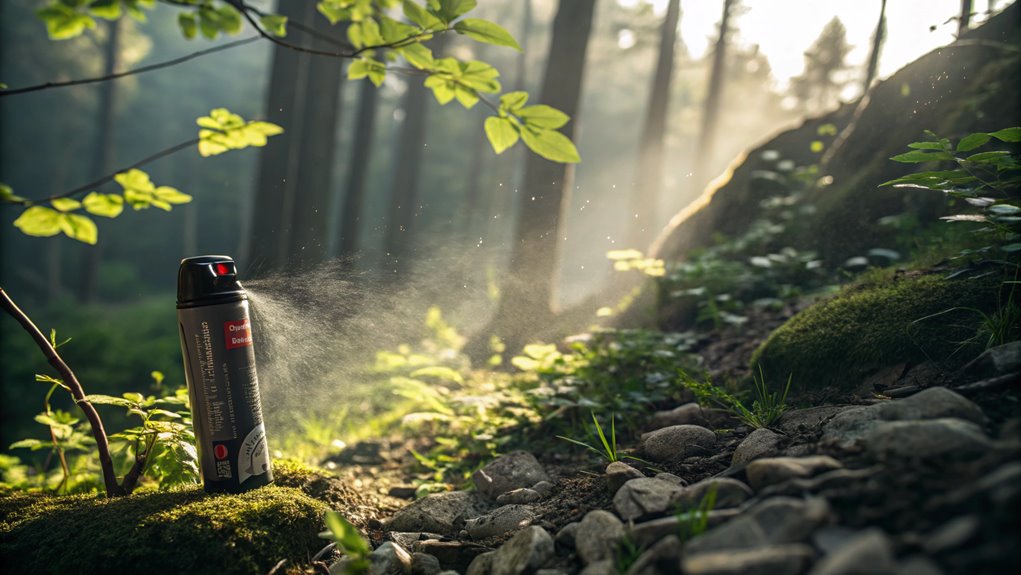
When it comes to deterring aggressive wildlife, bear spray has proven to be highly effective. You might wonder how it works and why it’s so significant for your safety. Bear spray efficacy lies in its formula, which contains capsaicin, the same compound that makes hot peppers spicy. When you spray it, it creates an intense burning sensation in the eyes and nose of an animal, causing them to retreat.
Understanding animal behavior is essential here. Wild animals, especially bears, are often curious or protective, but they don’t want to confront threats. If you use bear spray correctly, it can stop an animal in its tracks, allowing you to escape safely. The Guard Alaska Bear Spray is environmentally safe and effective even on wet bears, ensuring its reliability in various conditions.
Studies show that it’s more effective than firearms in preventing attacks, which is pretty impressive. It’s also easy to carry and use, making it a go-to option for hikers and campers.
Just remember to practice using it, so you know what to do in a stressful situation. With bear spray in hand, you’re not just hoping for the best; you’re taking a proactive step towards staying safe in the wild. Additionally, the high-emission fog spray pattern covers a range of up to 30 feet, ensuring broad coverage and increased effectiveness.
Legal Restrictions and Policies
Legal restrictions and policies surrounding the use of bear spray can vary markedly depending on your location. In some areas, it’s perfectly legal for you to carry bear spray for personal safety, but in others, there might be legal implications that could get you in trouble.
For instance, police departments might’ve strict policies against using bear spray in the line of duty, even when it could be effective. This creates a strange situation where you might be allowed to carry it for protection against wildlife, but officers can’t use it for crowd control or self-defense.
Policy enforcement can also differ between jurisdictions. Some police departments may prioritize traditional methods of restraint and control, thinking bear spray could lead to unintended consequences, especially in crowded areas.
If an officer were to use it, there could be legal ramifications if someone gets hurt or if it’s deemed excessive force. Furthermore, while bear spray might seem like a smart tool, the availability of affordable safety options such as personal security alarms under $10 can provide alternative means of protection. So, while bear spray might seem like a smart tool, the legal landscape can discourage its use by law enforcement, leaving you to wonder why they don’t consider it an option for their safety and yours.
Situational Awareness in Policing
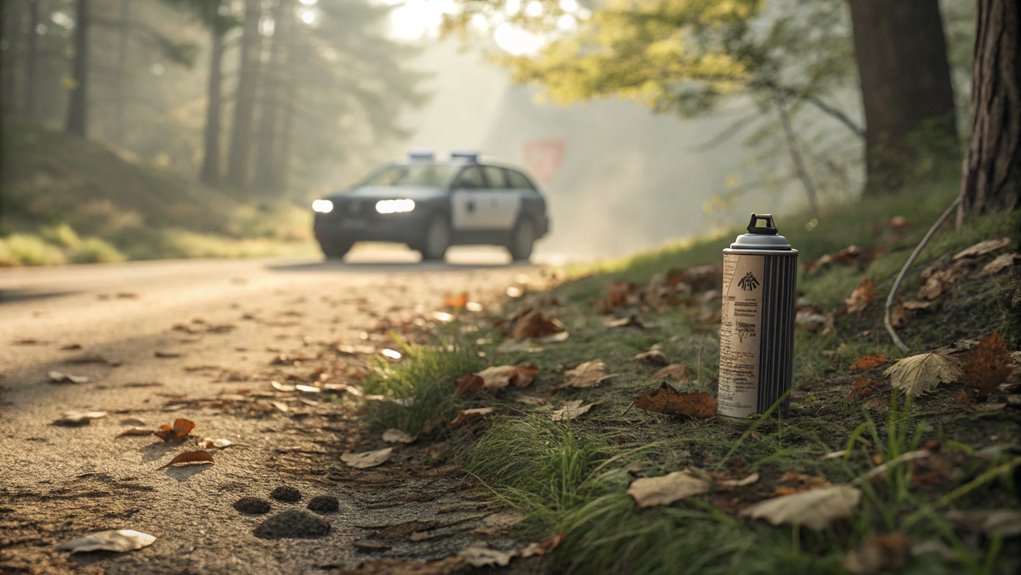
In high-pressure situations, situational awareness is essential for police officers to make quick and effective decisions. You might wonder how they stay sharp when faced with unexpected challenges. Well, it all comes down to a solid situational assessment. This means they constantly evaluate their environment, looking for clues that indicate potential threats.
For instance, they need to recognize behaviors that might signal danger, like someone acting suspiciously or aggressively.
Threat recognition goes hand in hand with situational awareness. When officers can identify the type of threat they’re dealing with, they can respond appropriately. If they spot a person who seems ready to escalate a situation, they might choose to de-escalate verbally instead of using force.
But, what if the threat doesn’t involve a person? Recognizing animals in a tense situation, like a bear, is just as important.
Understanding these concepts helps officers protect themselves and others. It’s all about making quick decisions in a split second. When they’re aware of their surroundings and can identify threats, they create safer outcomes for everyone involved.
That’s why situational awareness is a cornerstone of effective policing.
Training and Familiarity Issues
Situational awareness lays the groundwork for effective decision-making, but training and familiarity with tools can greatly influence an officer’s response in the field.
If an officer hasn’t received proper training on bear spray, they might hesitate or even overlook it in a tense situation. Those training gaps can be dangerous. You want your officers to feel confident in their choices, and if they’re untrained in using bear spray, it’s likely they won’t reach for it.
Familiarity concerns also come into play. Officers usually rely on tools they practice with regularly.
If bear spray isn’t part of their routine, they might struggle to use it effectively when it counts. Imagine trying to grab a tool you’ve hardly touched—it’s stressful, and that stress can lead to mistakes.
Alternatives to Bear Spray
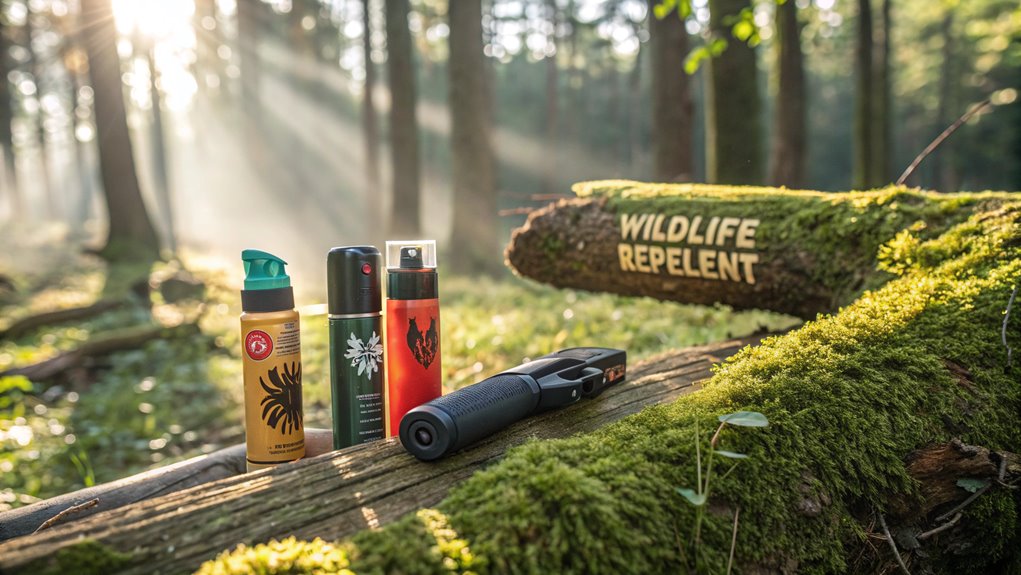
Many officers turn to other tools for defense instead of bear spray, often preferring methods they’re more familiar with. One popular option is traditional pepper spray, which comes in various sizes and strengths. It’s effective for self-defense, and many people are trained to use it.
There are also pepper spray alternatives, like foam or gel formulations, which can reduce wind blowback, making them easier to handle in tricky situations.
Another non-lethal option that officers might choose is a stun gun or taser. These devices can incapacitate a suspect without causing permanent harm, giving officers time to gain control of the situation.
Additionally, some departments are exploring the use of personal alarms or whistles, which can draw attention and deter potential threats without physical confrontation.
Finally, some officers may prefer using de-escalation techniques, relying on communication skills to peacefully resolve conflicts.
While bear spray can be effective against wildlife, officers often find themselves in situations that require tools and methods more suited to human encounters. By using these alternatives, they focus on keeping themselves and the public safe, while minimizing harm.
Public Perception and Trust
Officers often face public scrutiny regarding their choice of defensive tools, including the use of bear spray. This can impact community relations and trust building, which are essential for effective policing. When you think about it, how a police force communicates its choices can shape public perception greatly. If the community feels that officers are equipped with the right tools, it fosters a sense of safety and trust. Conversely, if the tools seem inappropriate, mistrust can grow.
Here’s a quick look at some factors that influence public perception:
| Factor | Impact on Trust |
|---|---|
| Transparency | Builds trust through honesty |
| Community Engagement | Strengthens relationships |
| Officer Training | Increases confidence in actions |
| Choice of Tools | Affects perceived effectiveness |
| Response to Incidents | Shows commitment to safety |
In this table, you can see that each factor plays a role in how the public views law enforcement. If officers are seen using tools like bear spray, it could either build trust or raise questions. Ultimately, the goal is to guarantee safety for everyone involved.
Tactical Considerations in Use
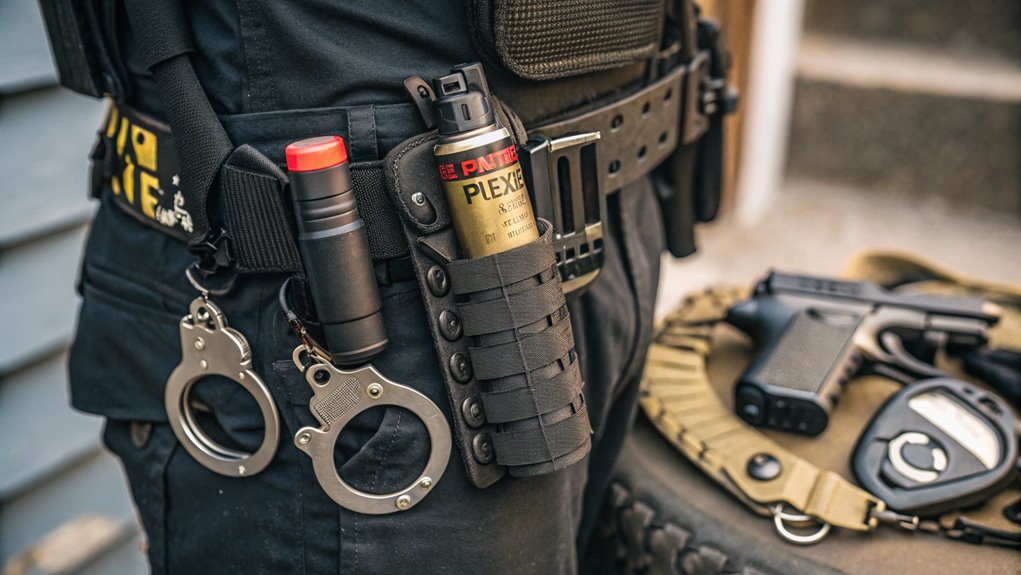
Taking into account the unique challenges police officers face in high-stress situations, the choice of defensive tools like bear spray requires careful tactical evaluation. You might think bear spray is a great option, but it’s not just about having it on hand.
Tactical deployment is essential—officers need to assess how and when to use it effectively. For instance, if you’re dealing with a suspect who’s already agitated, spraying bear spray could escalate the situation or cause panic among bystanders.
Situational dynamics play a big role, too. Not every environment is suitable for using bear spray. In crowded areas, the risk of affecting innocent people nearby is high.
Also, you have to take into account wind direction—if it shifts, you might end up spraying yourself or your partner instead of the threat.
Ultimately, police officers have to weigh the benefits and drawbacks of bear spray against other tools like tasers or pepper spray that may be more controllable in certain situations.
It’s about balancing safety for themselves and the public while effectively managing threats. That’s why bear spray, despite its effectiveness against bears, mightn’t be the best fit for police work.
Risks of Misuse or Overuse
What happens when bear spray is misused or overused in a policing context? You might think it’s just a harmless tool, but the misuse consequences can be serious.
Imagine a situation where an officer, feeling overwhelmed, sprays bear spray without fully evaluating the situation. This could lead to unintended harm, not just to the suspect, but also to bystanders and fellow officers. The spray can cause temporary blindness and breathing issues, making an already tense situation even worse.
Now, let’s talk about overuse effects. If officers rely too heavily on bear spray, they might skip other de-escalation techniques. This can create a pattern where they don’t consider other, safer options to handle situations.
Over time, this could lead to a lack of trust in law enforcement, as people might feel that officers are too quick to resort to spray instead of talking things through.
In a nutshell, using bear spray comes with risks. If officers misuse it or overuse it, the consequences can spiral out of control, putting everyone involved in danger. It’s essential to use this tool wisely and responsibly.
Case Studies and Examples
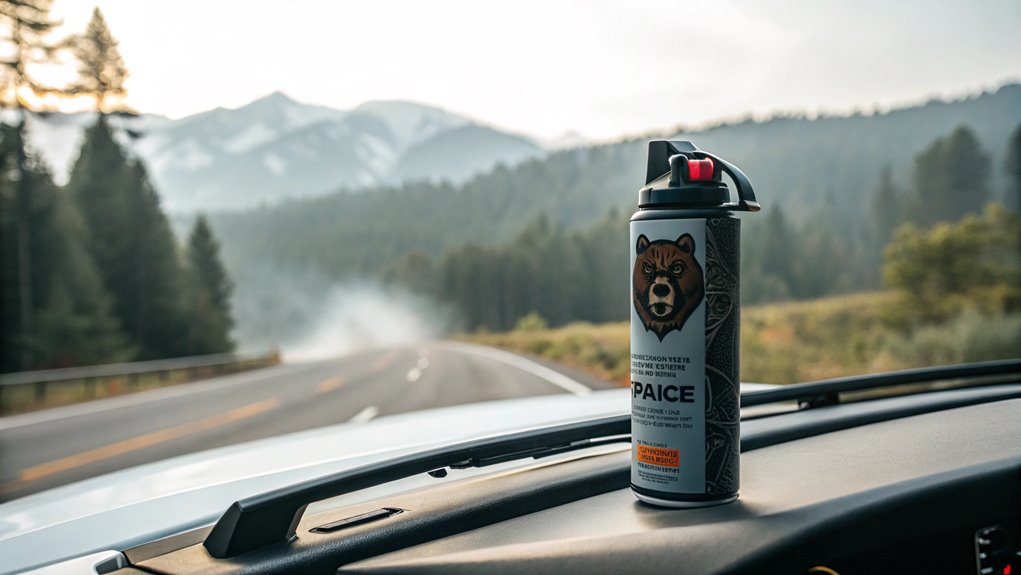
Real-life scenarios often highlight the complexities of using bear spray in law enforcement. Imagine a cop facing a bear encounter while on patrol in a national park. Sure, bear spray could deter the bear, but what if the situation escalates? The officer might worry about accidentally spraying innocent bystanders or themselves in the chaos. This concern for wildlife safety and public protection makes it tricky.
In another case, a police officer was called to a neighborhood where a bear rummaged through trash. Instead of using bear spray, the officer chose to back away slowly, prioritizing safety. They knew that spraying the bear might provoke it, leading to a dangerous confrontation.
These examples show that while bear spray can be effective, it isn’t always the best option. Many cops feel like they lack proper training in wildlife encounters, which adds to the hesitation.
Answers to Common Questions
How Does Bear Spray Compare to Traditional Police Weapons?
Bear spray and pepper spray both serve as non-lethal alternatives for self-defense, but bear spray’s formulation is designed for wildlife encounters, while pepper spray is tailored for human confrontation. You’ll find effectiveness varies based on situations.
Can Bear Spray Be Effective Against Human Threats?
In self-defense scenarios, bear spray can be effective against human threats, causing temporary blindness and respiratory distress. However, you should consider potential legal implications, as its use might not always align with self-defense laws.
What Are the Environmental Impacts of Bear Spray?
Bear spray’s environmental impacts include potential harm to non-target wildlife and vegetation. However, when used responsibly, it supports environmental safety and wildlife protection by preventing dangerous encounters, ultimately benefiting both humans and animal populations.
Are There Psychological Effects of Using Bear Spray?
Using bear spray can trigger a stress response, impacting your psychological readiness. When faced with a threat, the sudden activation of intense emotions might affect your decision-making and overall mental state, requiring careful consideration before use.
How Do Officers Decide When to Use Bear Spray?
When officers face a situation, they weigh use case scenarios and their training. You’ll see them assess threats, considering alternatives, and choosing bear spray if it’s deemed safer than other methods for de-escalation.
Bottom Line
In the end, even though bear spray can be super effective, it just doesn’t fit the needs of police work like a glove. Legal rules, training gaps, and the fear of misuse all play a role in why it’s not a go-to option. Just like you wouldn’t grab a butter knife when you need a real knife, cops need tools that match their specific challenges. Keeping everyone safe is the priority, and that means choosing the right tools for the job.




